Ripple, Solana, and TRON: the Innovative Altcoins Looking to Overtake the Giants
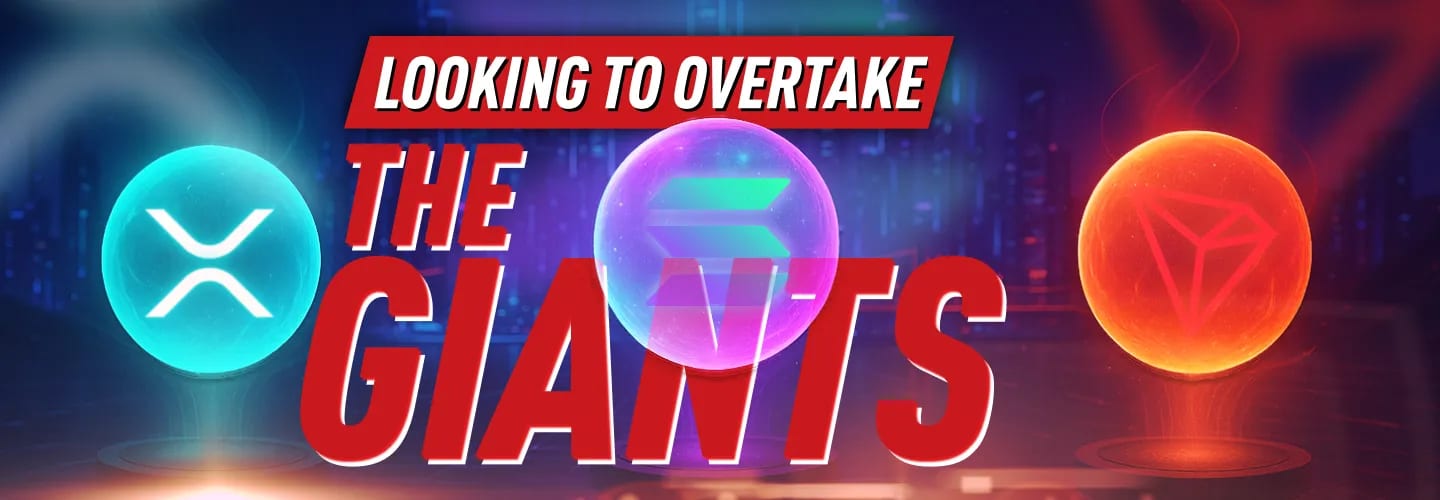
Ripple, Solana, and TRON: the Innovative Altcoins Looking to Overtake the Giants
In recent years, the growing popularity of cryptocurrencies has undisputedly changed the world of finance. The crypto market is constantly evolving, and it has undergone significant changes since Bitcoin’s birth in 2009.
Back then, it was just an experimental digital currency, but it has evolved into a colorful ecosystem of various blockchain projects and altcoins with unique value propositions.
While Bitcoin, Ethereum, and Tether are the giants currently dominating the crypto world, there are several other cryptocurrencies or altcoins more than worth mentioning, especially because more and more online poker and casino sites add these up-and-coming cryptos to their payment methods.
In this article, we will take a detailed look at three different cryptocurrencies that are frequently used as payment methods on poker sites. With their own ups and downs, each of these cryptos represents a different aspect of the digital asset revolution:
- Ripple (XRP) is the bridge between traditional finance and blockchain
- Solana (SOL) is a high-performance smart contract platform
- TRON (TRX) is the entertainment and content-sharing blockchain
We hope our guide, supplemented by expert opinion, will give you a solid overview of each cryptocurrency’s technological background, adoption metrics, competitive advantages, and future outlook, to help you navigate through today’s complex crypto landscape.
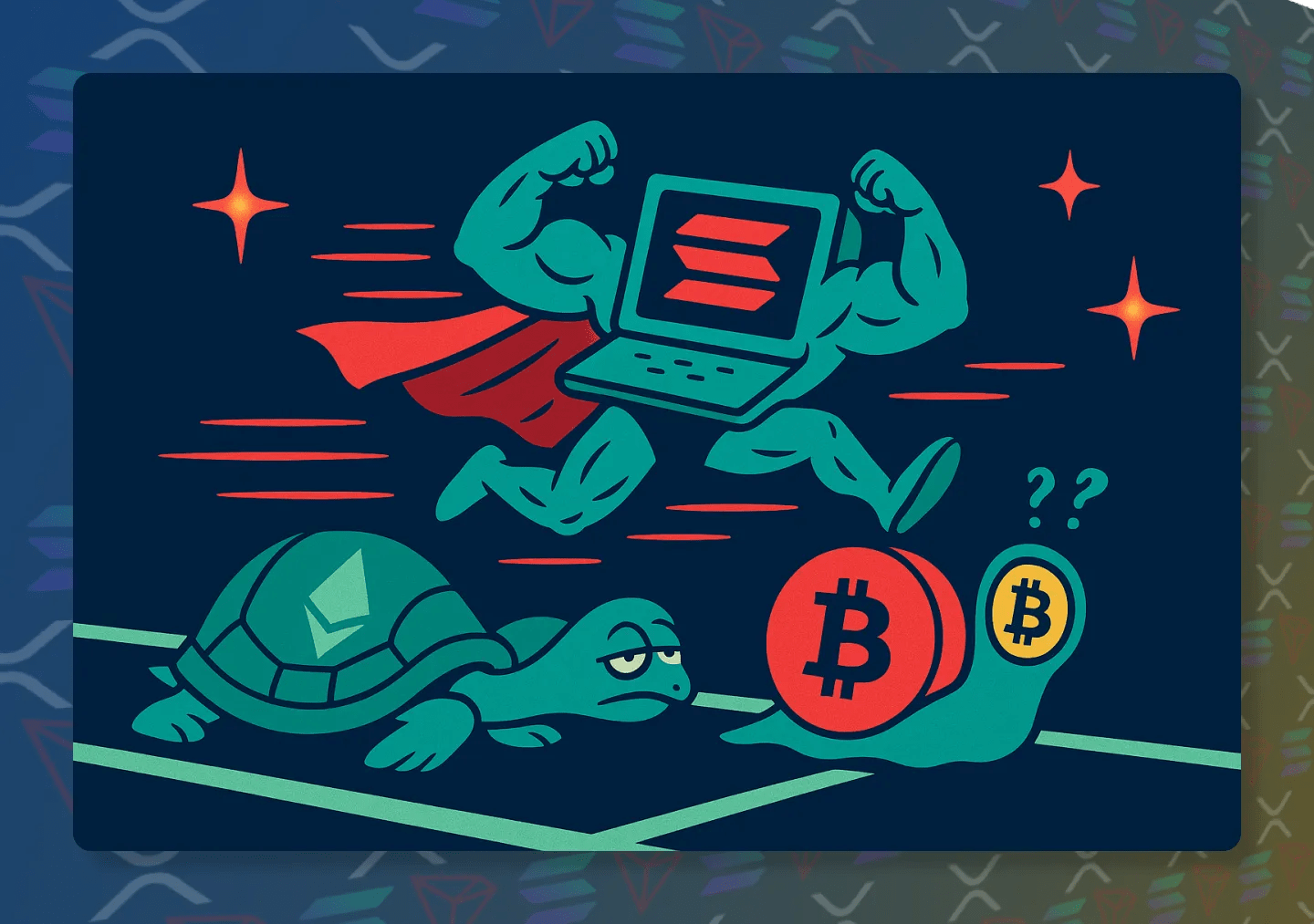
Ripple (XRP): Revolutionizing Cross-Border Payments
The Technology Behind XRP
Ripple’s XRP Ledger (XRPL) has an entirely different approach to blockchain architecture than its bigger competitors, Bitcoin and Ethereum.
Unlike very energy-intensive Proof-of-Work (PoW) or more scalable Proof-of-Stake (PoS) systems, XRPL uses a unique consensus protocol that doesn’t require mining at all.
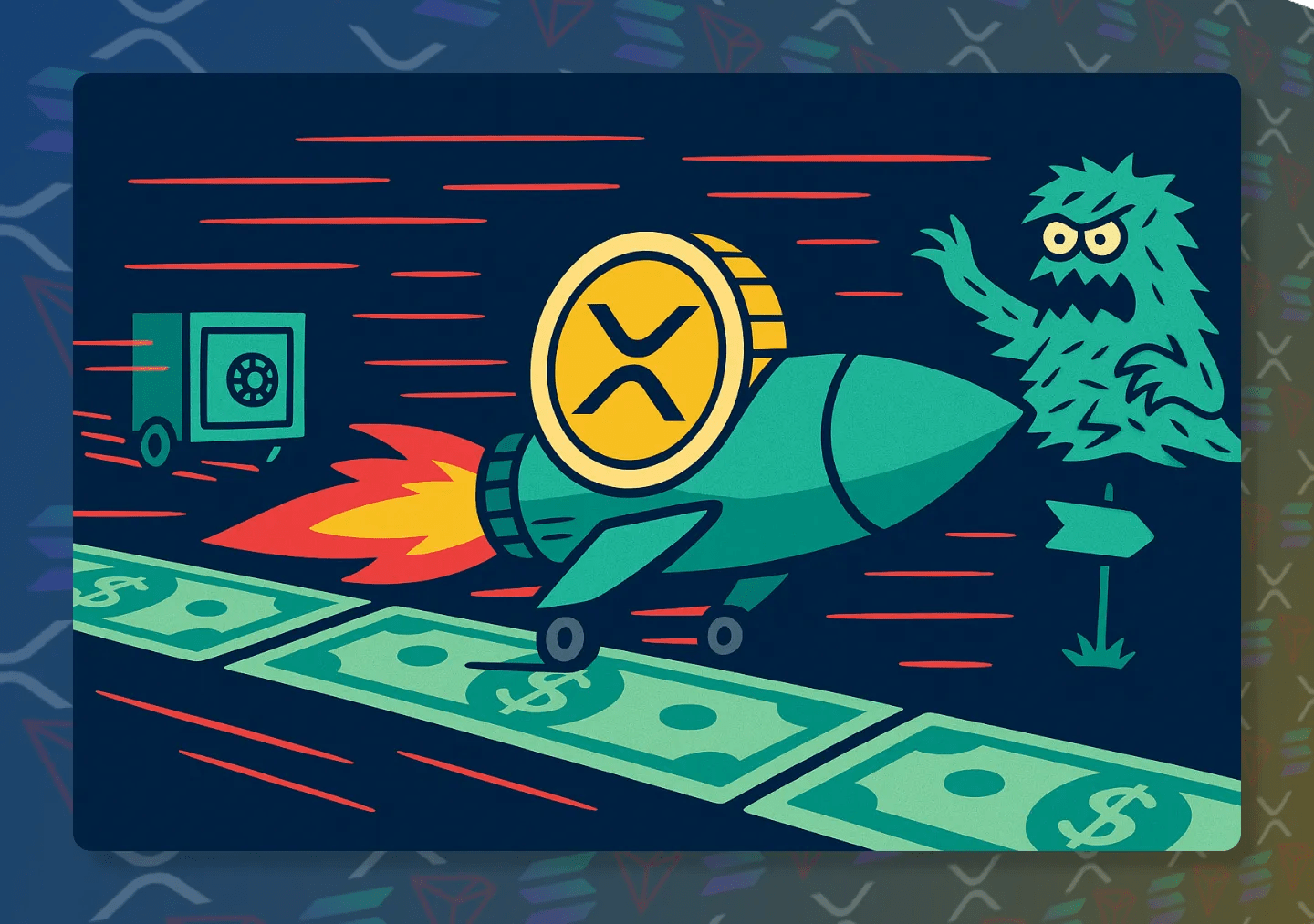
This different approach enables 1,500 transactions per second (TPS), compared to Bitcoin’s 7 TPS, and 3-5 second settlement times (the time it takes for a blockchain network to finalize a transaction), all while requiring minimal energy consumption (0.0079 kWh per transaction vs Bitcoin’s 1,173 kWh).
Ripple (XRP) is the ledger’s native token that serves as a bridge currency in Ripple’s decentralized global payments network, RippleNet. The currency allows financial institutions to avoid pre-funding nostro accounts, which is a major pain point in traditional cross-border transfers.
Adoption and Institutional Partnerships
The creators of Ripple strategically positioned the currency within the traditional financial sector.
Currently, more than 300 financial institutions use Ripplenet, including giants like Santander Bank, Bank of America, and SBI Holdings. Japan’s SBI Remit handles remittances to Vietnam and the Philippines via XRP.
What’s more, Ripple partnered up with the central banks of Colombia and the Republic of Palau in Oceania.
MoneyGram, one of the largest cross-border payment service providers in the world, was also Ripple’s partner for remittances from 2018 to 2021. The promising partnership ended in a dramatic collapse after Moneygram lost $12 million from XRP volatility.
The SEC Lawsuit: Implications and Outcomes
In December 2020, the U.S. Securities and Exchange Commission (SEC) filed a lawsuit against Ripple Labs, the company behind the cryptocurrency, claiming that XRP was an unregistered security. The case remains one of the most consequential legal battles in the world of crypto to this day.
In July 2023, Ripple achieved a partial victory: according to the court ruling, XRP is not a security when it is sold to retail investors, but the debate about institutional sales was still going on.
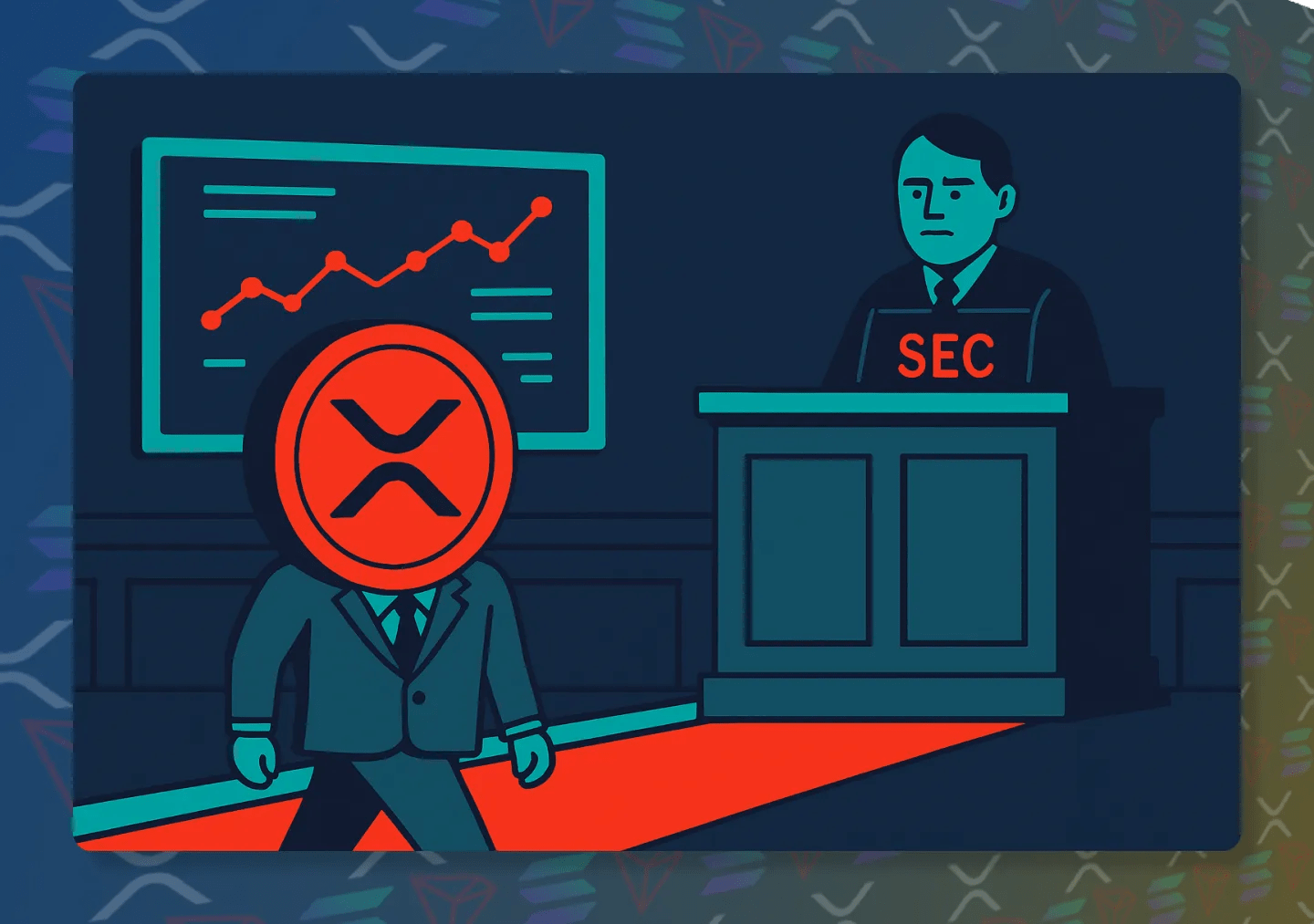
In March 2025, Ripple announced that the SEC had officially dropped its four-year-old lawsuit against the company.
Expert Analysis
In April 2025, after XRP fell from $3.38 in January to $1.75, a Korean financial analyst who uses the name XForceGlobal has made bold claims about XRP’s future price, stating the cryptocurrency could reach between $10 and $20 in the coming months.
XRP Price Analysis and Projections
As of April 2025, XRP’s market capitalization is $116.57 billion, and 1 XRP is worth $2.
| Scenario | 2025 Price Target | Key Drivers |
| Bull Case | $10.00 | SEC case resolution, bank adoption surge, Ripple IPO |
| Base Case | $2.80 | Gradual institutional adoption, crypto market recovery |
| Bear Case | $0.50 | SEC appeal success, regulatory crackdowns |
Solana (SOL): The High-Performance Blockchain
Architectural Advantages of Solana
It was not just Ripple where developers dreamed big to use an entirely different approach to blockchain architecture than Bitcoin or Ethereum.
Solana uses a Proof-of-History (PoH) system that not only outperforms Proof-of-Work and Proof-of-Stake systems, but is also faster than Ripple’s consensus mechanism. PoH is basically a cryptographic clock that solves another huge challenge of blockchain technology: time coordination.
This different approach enables an incredible 65,000 transactions per second, compared to Ripple’s 1,500 TPS, and Bitcoin’s 7 TPS. Solana’s block time, the average time it takes to produce a new block of transactions, is only 400 milliseconds, compared to Ethereum’s 15 seconds, and Bitcoin’s 10 minutes. Thanks to these performance metrics, Solana transactions’ settlement time is only 2.5 seconds, compared to Ethereum’s 15 minutes and Bitcoin’s 1 hour.
Furthermore, the cryptocurrency’s PoH mechanism allows them to charge only sub-penny transaction fees – meaning the blockchain charges less than $0.01 per transaction.
These specifications make Solana highly well-suited to high-frequency trading in DeFi, NFT minting and trading, and low-latency Web3 apps, because to offer a seamless user experience, they need almost instant blockchain responses.
Ecosystem Growth Metrics
Even though the cryptocurrency network experienced five major outages in 2022, totaling around 50 hours of downtime, Solana has been extremely resilient so far.
Solana had $210 million Total Value Locked (TVL) in DeFi, and as of April 2025, it has a staggering $6.55 billion, and more than 3 million Daily Active addresses (DAA). That means more than 3 million unique blockchain addresses send or receive funds on the network every day!
The Solana ecosystem has also helped countless projects come to life since its inception. Notable projects include StepN, a crypto-based Web3 Move-to-Earn (M2E) app that rewards its users with cryptocurrency tokens when they walk, jog, or run, Magic Eden, a leading NFT marketplace that handled around 90 percent of Solana’s NFT volume at its peak, and Jupiter, the largest decentralized exchange (DEX) aggregator that optimizes trades across various liquidity sources to minimize slippage for its users.
The Firedancer Upgrade
Firedancer is a high-performance validator client that Jump Crypto is developing. Originally scheduled for late 2024, Firedancer aims to make Solana even faster, more scalable, and decentralized.
The upgrade also seeks to address the aforementioned past outage issues, improving the network’s stability by introducing a second independent validator client that simultaneously enhances decentralization.
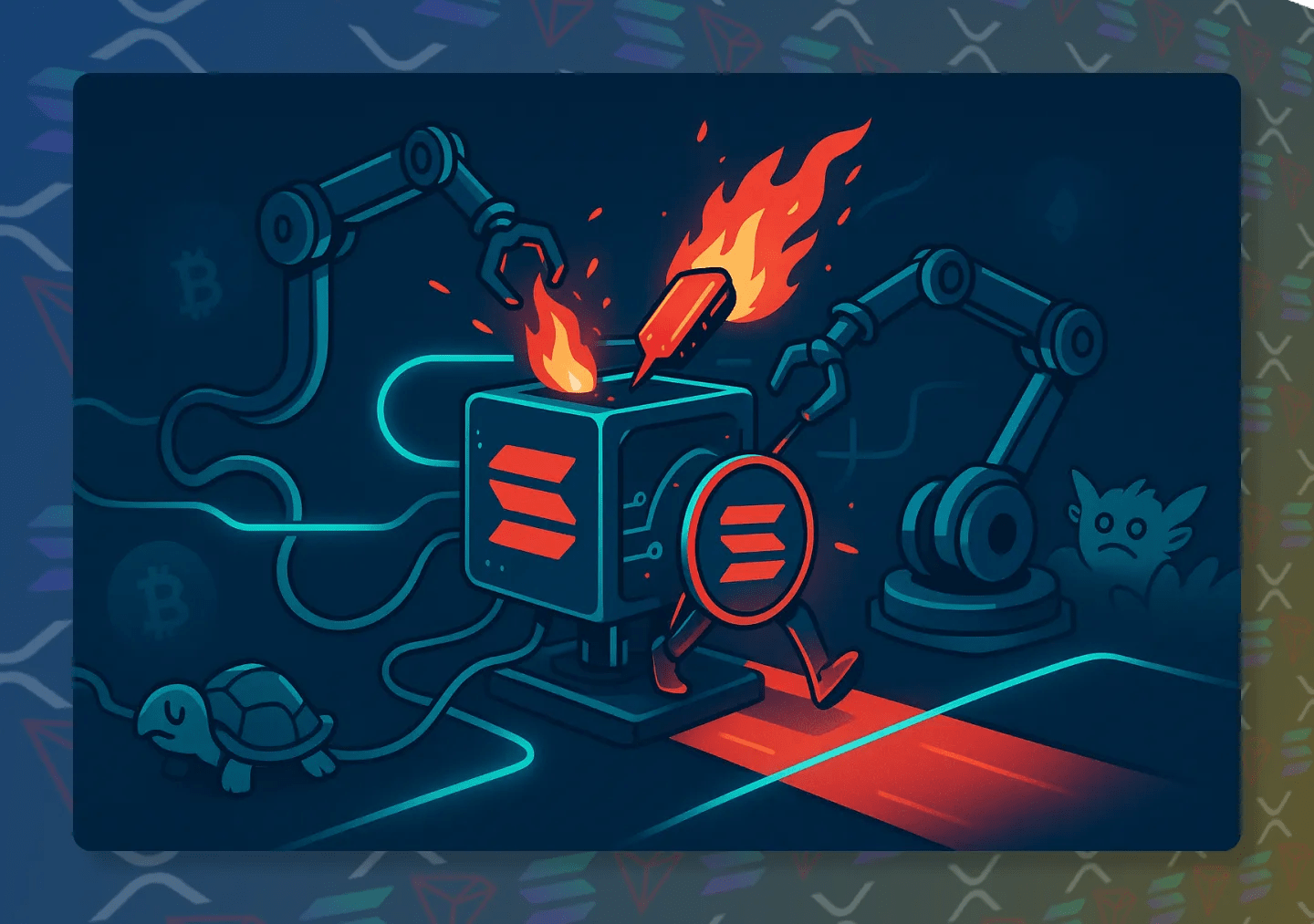
Firedancer’s developers target the upgrade’s speed boost to more than 1 million TPS versus the current 65,000, while cutting the network’s energy use by optimizing resource-heavy operations.
The full implementation of Firedancer is expected to launch on the Solana mainnet in mid-2025.
Developer Perspective
Jacob Creech, Head of Developer Relations at Solana Foundation, expressed the company’s expectations from the upgrade.
‘Firedancer could be Solana’s ‘Merge moment’—if successful, it may finally put the outage narrative to rest and attract more institutional builders’, he said.
Solana Price Analysis and Projections
| Metric | Current (April 2025) | 2025 Projection |
| Price | $120 | $300−1,000 |
| Market Cap | $61.8B | 150B−400B |
| Key Drivers | Network upgrades | Mass Web3 adoption |
TRON (TRX): The Entertainment Powerhouse
Content Monetization Ecosystem
Founded by Chinese tech entrepreneur Justin Sun, TRON’s high-throughput blockchain focuses on decentralized entertainment and content sharing. TRON’s architecture specifically targets digital content creators through several innovative features.
TRON’s resource model is quite unique: its users basically stake the TRX coin to gain bandwidth for transactions, while the energy required for smart contracts can also be leased, resulting in an economy where creators don’t have to directly pay for gas fees.

In 2018, TRON acquired the world’s largest peer-to-peer file-sharing platform, BitTorrent. For its more than 100 million users, the company introduced BTT tokens as rewards when they seed a torrent, and also launched the BitTorrent File System (BTFS), a decentralized storage solution. As a result, the now Web3-powered BitTorrent ecosystem processes more than 2 billion transactions every month.
In 2023, APENFT, TRON’s flagship NFT marketplace, also saw a 450% NFT transaction surge, thanks to its integration with Ethereum and the Binance Smart Chain, making possible the cross-chain collecting of digital art.
Lil Yachty Partnership
In 2023, TRON also hit a partnership deal with Atlanta rapper Lil Yachty, who released a myriad of exclusive content as NFTs and token-gated assets on the cryptocurrency network.
Previously unreleased tracks like exclusive demo versions of his sons were sold as NFTs, isolated vocals and instrumentals, limited to 50 copies were sold to producers, aminated, AI-assisted visualizers were auctioned as digital art, and the musician’s fans also had the opportunity to get their hands on real-world perks like physical hoodies and VIP backstage passes for Yachty’s shows – TRX token holders even had the opportunity to participate in private Q&A sessions with the musician.
TRON’s marketing stunt proved to be very effective. It grossed 2.3 million TRX in first-week sales, TRON gained 18,000 new wallet signups from fans, and it introduced a new model for artist-fan monetization to the world, where musicians can bypass Spotify’s or Apple Music’s 30% fees.
Stablecoin Dominance
TRON handles over 50% of all Tether (USDT) transfers, thanks to its cost efficiency, exchange integration, and remittance corridors.
Traders prefer the TRON-USDT pair because it is much cheaper than Ethereum for transfers under $1,000, and it is faster than Bitcoin-based Tether.
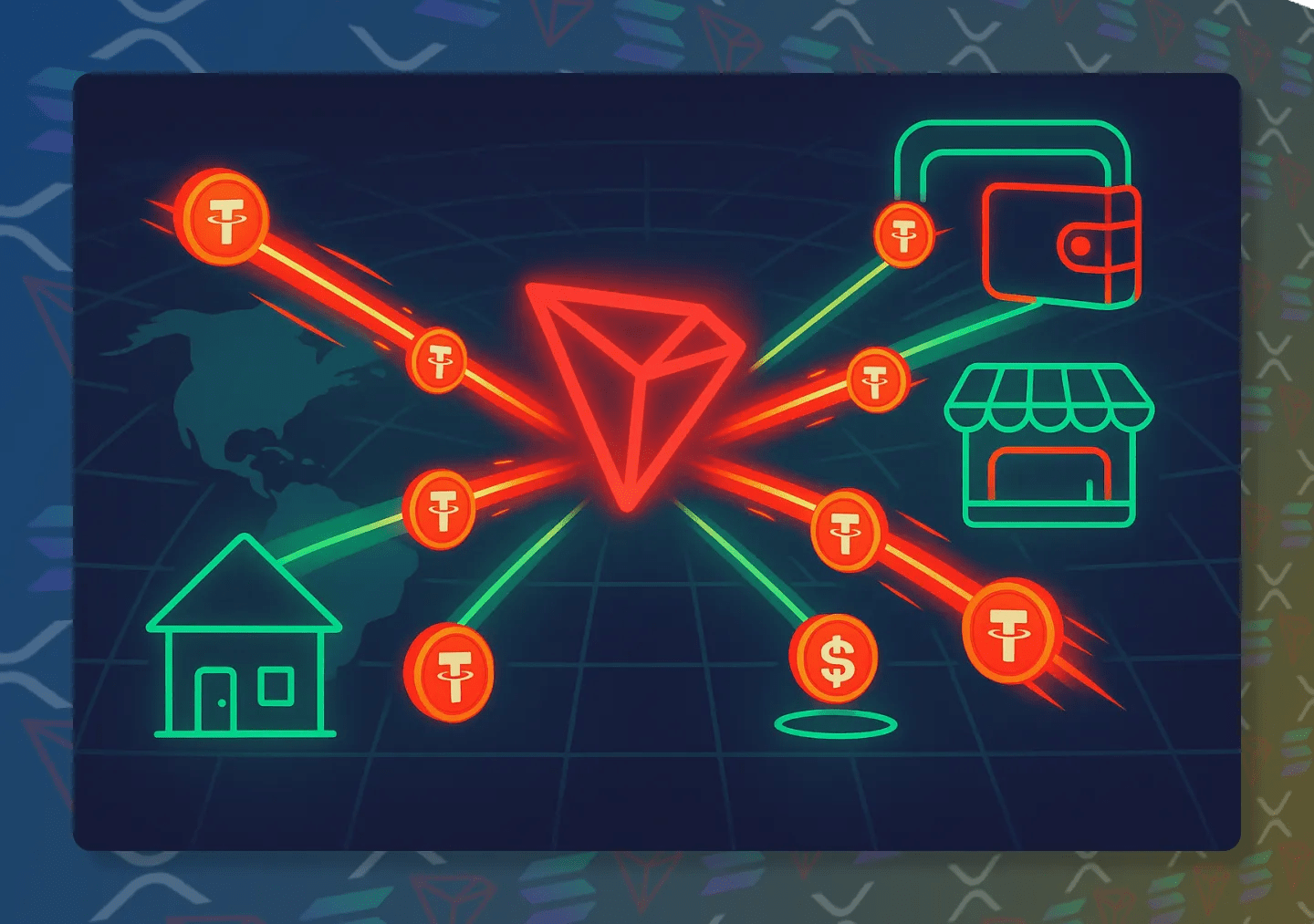
Here’s a detailed breakdown of the top 3 crypto networks with the highest daily USDT volume:
| Network | Avg. Fee | Settlement Time | Daily USDT Volume |
| TRON | $0.01 | 15 sec | $20B+ |
| Ethereum | $4.50 | 5 min | $12B |
| Solana | $0.0005 | 5 sec | $5B |
TRON has universal exchange support, with 92% of major exchanges like Binance, OKX, HTX, KuCoin, and Bybit listing TRON-USDT pairs.
XRP also has a liquidity advantage, so it is easier to buy and sell large volumes without slippage. Unlike some Ethereum tokens during congestion, it is always available for deposits and withdrawals.
Furthermore, TRON-USDT is highly popular for arbitrage trading between the Asia and the US markets. Asian bots generate 30-50% of TRON’s USDT volume, providing 24/7 activity for the pair. Arbitrage trading proved to be a profitable endeavor in Asia, with many regarding it as a pretty stable source of extra income. For example, a Seoul-based bot makes 500 TRON-USDT arbitrage trades every hour, earning around $50 every day after fees.
The pair also works as a remittance corridor, a high-volume money transfer route between countries. Usually used by immigrant workers who send part of their salaries back home, the cryptocurrency pair offers much lower fees than the usual 5-7 percent banking fees, boosting financial inclusion.
The Philippines-Pakistan route processes $200 million every month via USDT-TRON, and Venezuelan merchants increasingly accept TRON-USDT too to bypass hyperinflation and capital controls. In 2023, the Caracas Chamber of Commerce reported that around 40 percent of street vendors in Venezuela accepted TRON-USDT.
Expert Warning
Despite TRON’s increasing popularity, some experts warn about potential failures of the crypto network. Larry Cermak, CEO and Director of Research for the leading cryptocurrency news site The Bloc, is one of these sceptics.
‘TRON’s stablecoin volume looks impressive, but over 60% of validators are controlled by Justin Sun-affiliated entities. This creates single-point-of-failure risks, he said.
TRX Price Analysis and Projections
As of April 2025, TRX’s market capitalization is $22.71 billion, and 1 TRX is worth $0.24.
| Scenario | 2025 Price Target | Key Drivers |
| Bull Case | $0.35 | Successful USDD stabilization, BitTorrent Web3 integration, Asian CBDC partnerships |
| Bear Case | $0.05 | Regulatory action against USDT, loss of validator diversity, and creator exodus to other platforms |
Before You Invest in Crypto
Apart from the possibility of investment, cryptocurrencies are a great way to deposit and withdraw funds from poker and casino sites.
Fiat currency transactions usually have a much longer processing time, often measured in days, and relatively high transaction fees. As more and more poker platforms support crypto transactions that are often feeless and lightning-fast, they might be the most convenient payment methods for most players.
Before you decide to buy crypto, though, you should be aware that the crypto market is still quite young, and Bitcoin, Ethereum, and the USDT stablecoin are evolving rapidly. Owning or trading most cryptocurrencies always carries the risk of losing money because of their highly volatile nature.
It is advised to take the time to understand the assets you want to hold and learn some basic risk management before buying crypto. To end our article, here are a few tips on how to make crypto investments safer.
Choose a Reputable Exchange
There are many shady cryptocurrency exchanges out there, so make sure to use a legit service. Coinbase, Binance, and Kraken are legitimate exchanges. Each of them has its pros and cons, with Coinbase being the best for beginners, Binance having the highest liquidity, and Kraken being the most secure.
Secure Your Investments
Always enable Two-Factor Authentication on the exchange platform you use, so your cryptos cannot get stolen easily. If you plan to hold your cryptos for the long term, consider buying a hardware wallet like Ledger or Trezor.
Diversify Your Portfolio
As with all assets, diversification of portfolios is a great way to manage risk. The most commonly advised diversification for cryptos is 60 percent BTC for long-term storing of value, 30 percent ETH due to its growth potential from DeFi or NFTs, and 10 percent USDT to hedge against volatility.
Disclaimer: The information provided in this article is for educational and informational purposes only and should not be construed as professional investment advice. Investing carries risks, including the potential loss of capital. Always conduct your own research and consult a qualified financial advisor before making any investment decisions. The author and publisher are not responsible for any financial losses incurred as a result of actions taken based on the content of this article. Invest at your own risk.
If you’re interested in crypto gaming, make sure to check out our best poker bonus codes and the best casino promo code offering!



















